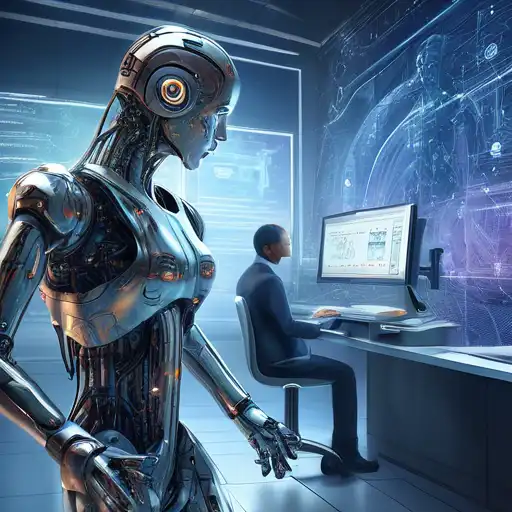Introduction to AI and Machine Learning
In the rapidly evolving world of technology, Artificial Intelligence (AI) and Machine Learning (ML) are two terms that often come up in discussions about the future of computing and automation. While they are closely related, they are not the same thing. This article aims to clarify the differences between AI and ML, providing a comprehensive understanding of each field.
What is Artificial Intelligence?
Artificial Intelligence is a broad area of computer science that focuses on creating systems capable of performing tasks that would normally require human intelligence. These tasks include problem-solving, recognizing speech, learning, planning, and understanding natural language. AI can be categorized into two types: narrow AI, which is designed to perform a narrow task (e.g., facial recognition or internet searches), and general AI, which can perform any intellectual task that a human being can.
What is Machine Learning?
Machine Learning is a subset of AI that provides systems the ability to automatically learn and improve from experience without being explicitly programmed. ML focuses on the development of computer programs that can access data and use it to learn for themselves. The process of learning begins with observations or data, such as examples, direct experience, or instruction, in order to look for patterns in data and make better decisions in the future based on the examples that we provide.
Key Differences Between AI and Machine Learning
While AI and ML are often used interchangeably, there are key differences that set them apart. AI is the broader concept of machines being able to carry out tasks in a way that we would consider "smart". Machine Learning is a current application of AI based around the idea that we should really just be able to give machines access to data and let them learn for themselves.
- Scope: AI has a wider scope than ML. AI is about creating intelligent machines that can simulate human thinking capability and behavior, whereas ML is about machines learning from data provided to them.
- Goals: The goal of AI is to create systems that can perform complex tasks, while the goal of ML is to create systems that can learn from data to improve performance on a specific task.
- Applications: AI is used in a wide range of applications, from robotics to natural language processing. ML is primarily used in applications where the system needs to learn from and make predictions on data.
How AI and Machine Learning Work Together
Despite their differences, AI and ML complement each other in many ways. Machine Learning is one of the ways we achieve Artificial Intelligence. By using algorithms to parse data, learn from it, and then make a determination or prediction about something in the world, ML is a critical component of making AI systems smarter over time.
Conclusion
Understanding the difference between AI and Machine Learning is crucial for anyone looking to delve into the field of technology. While AI is the broader science of mimicking human abilities, Machine Learning is a specific subset of AI that trains a machine how to learn. Together, they are shaping the future of technology, making our lives easier and more efficient. For more insights into the world of technology, explore our tech trends section.
